Get PeakVisor App
Sign In
Search by GPS coordinates
- Latitude
- ° ' ''
- Longitude
- ° ' ''
- Units of Length

Yes
Cancel
Share ×

Scan the QR code and open PeakVisor on your phone
❤ Wishlist ×
Choose
Delete
Brescia Hills Park is one of the nature parks in the province of Brescia in the Lombardy region of northern Italy. The main feature of the park is its panoramic views over the city, the Po River Plain and the Brescia and Garda Prealps. Brescia Hills also features Medieval Brescia Castle. There are 36 named mountains in the park, the highest of which is Dosso Falamorbia (1,012 m / 3,320 ft) and the most prominent of which is Monte Dennо (873 m / 2,864 ft).
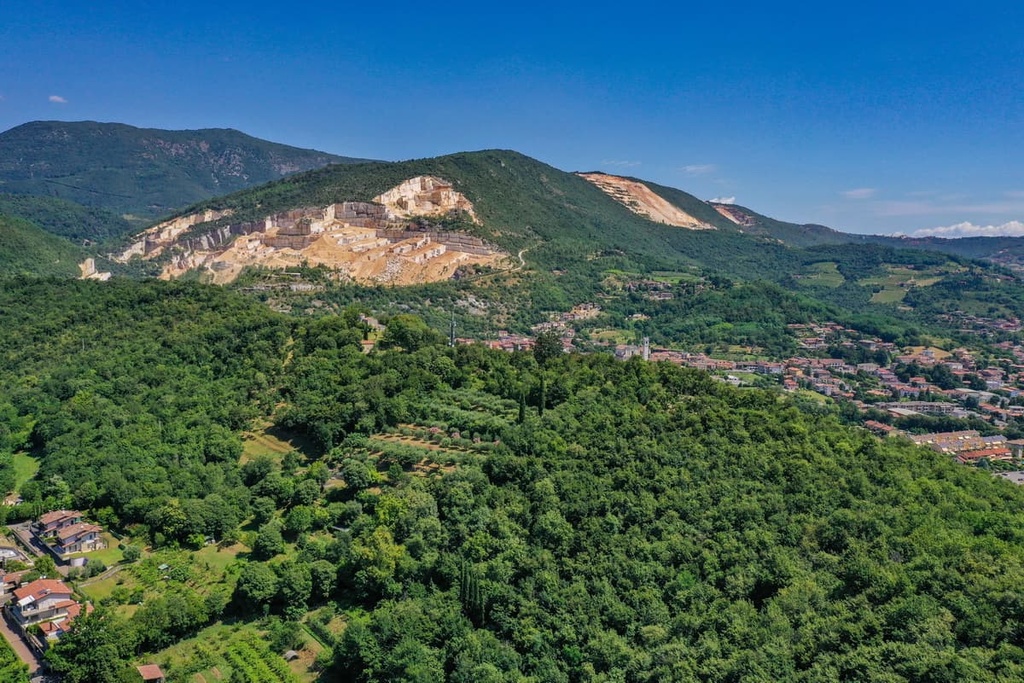
Brescia Hills Park (Parco delle Colline di Bresci) gets its name from its main feature, the hills (colli or colline in Italian) of Brescia. These hills are no more than 1,000 m (3,280 ft) hig, but they are hills nonetheless.
The park was founded in 1997 to preserve the landscape, flora and fauna, and other natural features of Monte Maddalena (870 m / 2,854 ft) and the surrounding hills. Monte Maddalena is not the highest mountain in the park, but it is the highest in the city.
Brescia Hills Park is located near the city of Brescia in the province of Brescia within the Lombardy region of northern Italy.
The total area of the park is 4,418 ha (10,900 acres). In addition to Brescia, the park also belongs to five other smaller municipalities in the same province: Bovezzo, Cellatica, Collebeato, Rodengo Saiano, Rezzato. All of these municipalities are home to nice charming towns that are worth visiting.
The park surrounds the city from all sides except the south, where the Po River Plain (Padan Plain) is located. The Po River Plain covers a large strip of northern Italy between the Alps and the Apennines and the Adriatic Sea.
In the east, the park features Monte Maddalena (870 m / 2,854 ft) and Monte Camprelle (564 m / 1,850 ft). Meanwhile in the north, you can find the highest mountain in the park, Dosso Falamorbia (1,012 m / 3,320 ft). The western part of the park also features the towering Monte Pesso (483 m / 1,584 ft).
It’s also worth noting that Brescia Castle Park (Parco Castello di Brescia) is located within Brescia Hills Park on the Colle Cidneo (210 m / 797 ft). In some ways, this sort of makes it like a park within a park, though it offers some of the best views of the region.
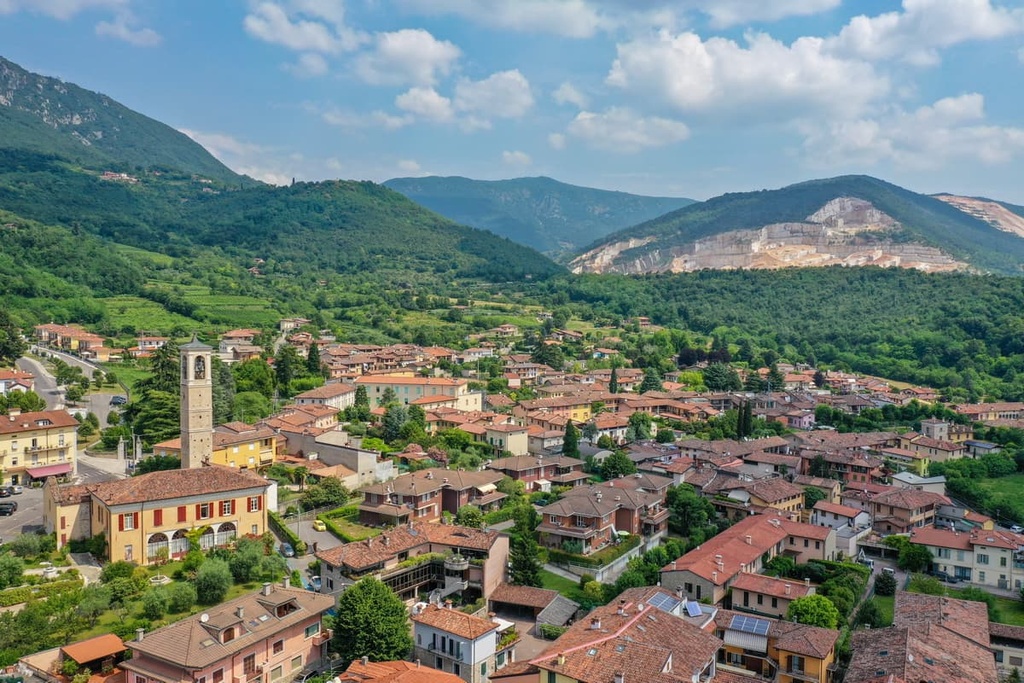
Also, if you’re in the area, you may want to check out some of the other major nature parks in the province. Some other parks that are worth visiting include Stelvio National Park (Parco Nazionale dello Stelvio), Adamello Regional Park (Parco dell’Adamello) in the Adamello-Brenta Nature Park, and Brescian Upper Garda Regional Nature Park (Parco Alto Garda Bresciano).
The nearest large cities to Brescia are Bergamo (53 km / mi, 40 minutes by car) and Milan (99 km / 61.5 mi, 1:15 hours by car) to the west. Alternatively, you can travel here from Verona (71 km / 44.1 mi, 1 h by car) to the east and Crema (62 km / 38.5 mi, 50 minutes by car) to the south.
The most convenient way to travel between these cities by public transport is Trenord or Trenitalia trains.
However, just remember that traveling a short distance in Italy does not always mean that you’ll travel at a great speed. I often travel between Bergamo, Brescia, and Verona, and each time it’s a bit of an adventure. The arrival of the scheduled train at its scheduled time is more of an exception than the norm. If you get to board an on-time train here, consider yourself lucky!
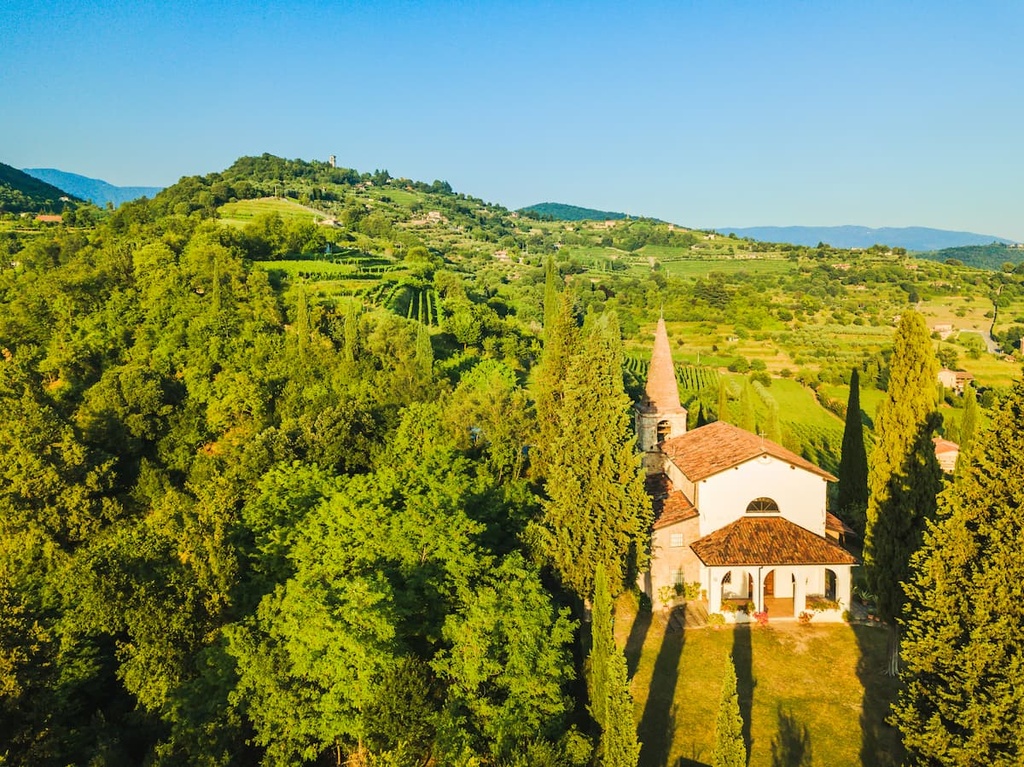
Additionally, in the evenings and on weekends, trains on this route are also usually packed with people who are traveling to Milan. So, be prepared for crowds if you’re hedging to Brescia Hills on the weekend or in the evening.
The hills in the park were formed long ago between the end of the Triassic and the early to middle Miocene, or, in other words, between approximately 200 and 20 million years ago. The hills consist of sedimentary limestone and dolomite rocks, which are also found in the nearby Dolomites.
As in the Dolomites, there are also many fossils of algae and marine animals in the Brescia Hills. In fact, these marine fossils are what indicated to scientists that there was once a tropical sea (the Tethys Ocean) over what is now Italy.
As a result of the collision of the European and African tectonic plates and the closure of the Tethys Ocean, the mountains of the Alps were formed. These peaks subsequently underwent a long process of deformation as a result of volcanic eruptions, weathering, crustal fractures, and overlapping layers of crust.
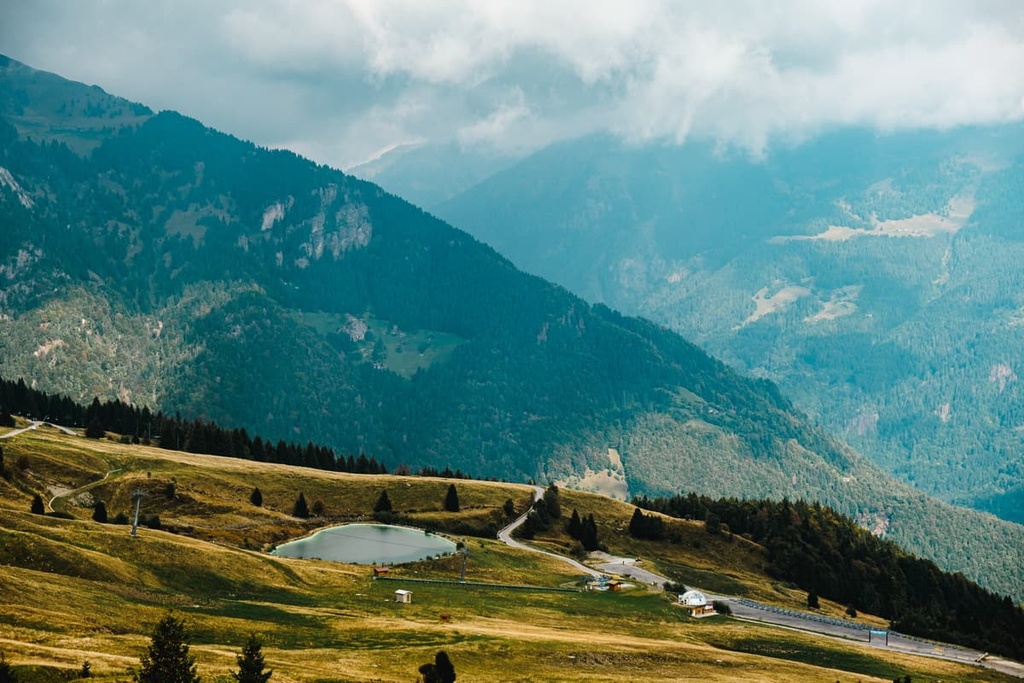
Other major geologic features of the area include the presence of some marl (carbonate-rich mud or mudstone) and flint (from the mineral quartz). In particular, Lombard flint is a variety of colored stones that were formed between 170 and 150 million years ago.
In addition to the hills, other features of the landscape of the park definitely include:
In addition to beautiful views and the opportunity to escape for a day (or even two) from the bustle of the city, the park features a variety of flora and fauna.
The hills of the Brescia park are covered with thermophilic forests that consist of trees, shrubs, and other low-growing plants.
As far as trees go, Norway spruce, field maple, sycamore maple, European nettle, silver birch, downy oak, sessile oak, European hop-hornbeam, terebinth, and chestnut grow in the park. Some of the many shrubs that can be found in the park include coronilla, tree heather, Jerusalem thorn, snowy mespilus, and elmleaf blackberry.
The park also contains a large number of flowers that tend to appear as early as the beginning of March. The forest at this time is unusually beautiful: the trees and hills are still bare, but there are many flowers everywhere.
Furthermore, the pride of the park are some very rare orchids. These include various Ophrys (bee orchids), Serepias, Limodorum, Orchis, and Himantoglossum species.
If you want to look for beautiful plants in the park, consider venturing to the Badia Forest (Bosco della Badia) on Colle di Sant’Anna (203 / ft) at the southernmost tip of the west end of the park. This place isn’t frequently visited by tourists, but it’s definitely worth the trek.
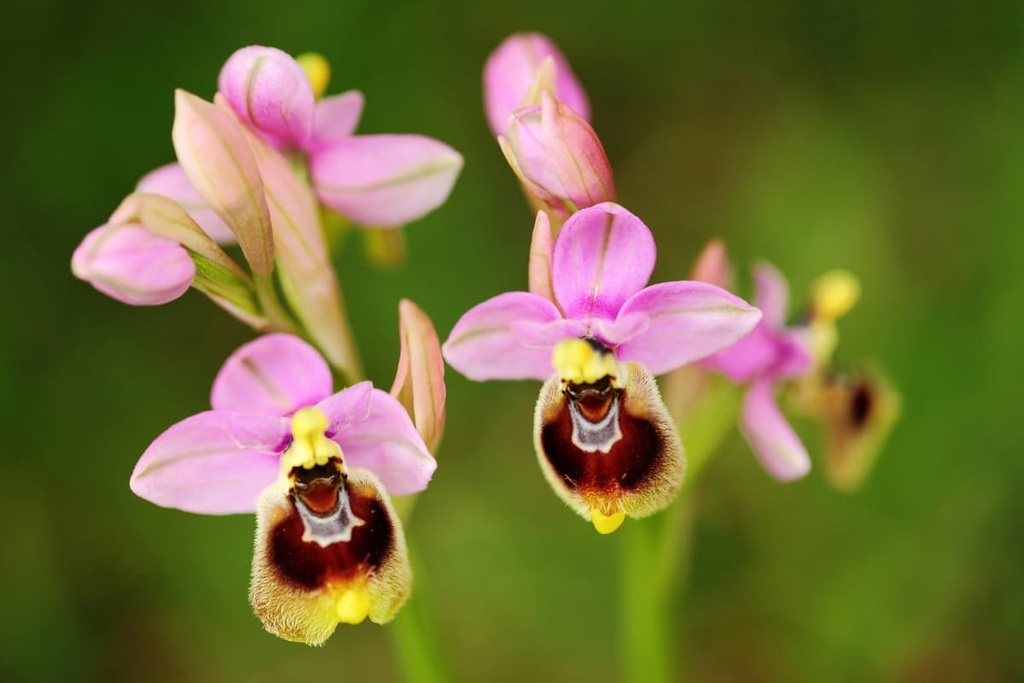
You won’t find big animals like deer or wild boars in the park because of the park’s proximity to major cities, but there are plenty of medium and small animals you might see during your visit.
The park is home to the West European hedgehog, shrew, pipistrelle, European hare, red squirrel, fox, least weasel, and beech marten, among others.
There are many birds in the park, too, including the ortolan bunting, melodious warbler, and whitethroat,
Additionally, common-spotted reptiles in this area include wall geckos, lizards, slowworms, and many types of snakes. Note that some of these snakes are venomous so be careful during your hikes.
The uplands in the Brescia Hills Park belong to the Brescia Prealps, which is one of the two mountain groups in the larger Brescia and Garda Prealps along the Garda Prealps.
These peaks are part of one of the nine large mountain groups in the Southeastern Alps according to the Italian SOIUSA classification. The highest peak of the Brescia and Garda Prealps is Monte Cadria (2,250 m / 7,395 ft), which is located not far west of the northern tip of Lake Garda.
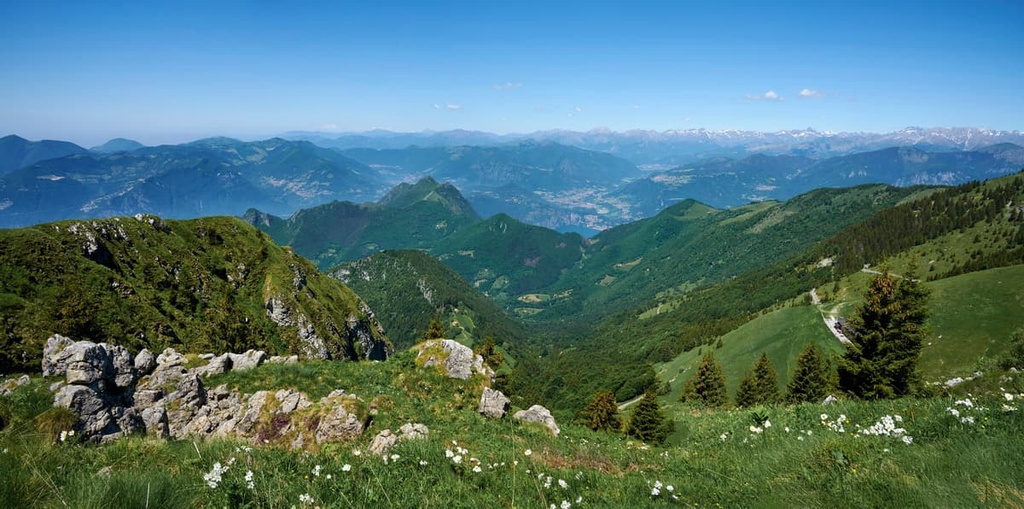
According to the Alpine Club classification of the Eastern Alps (AVE), which generally repeats the boundaries of the previous classification, these mountains are simply called the Garda Mountains and belong to the Southern Limestone Alps. The Southern Limestone Alps are one of the four parts of the Eastern Alps according to the AVE.
The Brescia and Garda Prealps group is bordered by the Bergamasque Alps and Prealps group to the west and the Southern Rhaetian Alps, which includes the Ortler Alps and Adamello-Presanella Alps, to the east and north.
As for the individual peaks of the park, they may not be very high. But, they offer superb views of the surrounding region.
Yep, even from the summit of the small Colle Cidneo, you will see many higher mountains. For example, here is what I was able to see from the summit of this hill with PeakVisor:

Furthermore, the trails within the park rarely gain more than 190 to 960 m (623 to 3,149 ft), so they’re perfect for intermediate-level hikers.
The entire park is one large system of light to moderately difficult hiking trails. You can find these trails directly in the PeakVisor app to help you plan your adventure.
There are nearly two dozen trails in the park. They are all numbered and also marked with different colors.
Throughout the park, you can also walk and navigate on marked Italian Alpine Club (Club Alpino Italiano, CAI) trails, which are easily recognized by their red and white signs that feature large three-digit numbers, such as 567, 781, and 858.
One potential itinerary starts with a climb of Colle Cidneo (246 m / 807 ft). This leads you to the Brescia Castle Park, which is quite large. It takes about 2 hours to get to the park, not including time spent at the museum.
Afterward, from Brescia Castle Park, you can walk all the way through the eastern part of the park on trails 3V, 8, 9, 10, and possibly 16. The last two trails end at bus stops in the north of Brescia that lead you back to the city center and train station. It will take most people about 7–8 hours to complete this hike so it is best done in spring and summer when there are long daylight hours.
Alternatively, the western portion of the park can also be traversed on trails 19 and 3V. By the way, 3V stands for Three Valleys. This is a separate route with a name that speaks for itself.
Finally, a great loop hike can be done in the small valley between the two eastern parts of the park. Making a loop of the park is an excellent way to see the quiet and beautiful life that many people live in the numerous small settlements that are outside the large and bustling Brescia.
However despite the fact that the park contains relatively small mountains, a large hike through it for half a day or a whole day is quite sporty. It is better to treat a trip to the park as a true hike rather than as an easy walk.
In other words, in my hiking experience, it's always better to say "That was easier than I expected, I could have walked twice as much!" than "Who made me go up that high mountain?!"
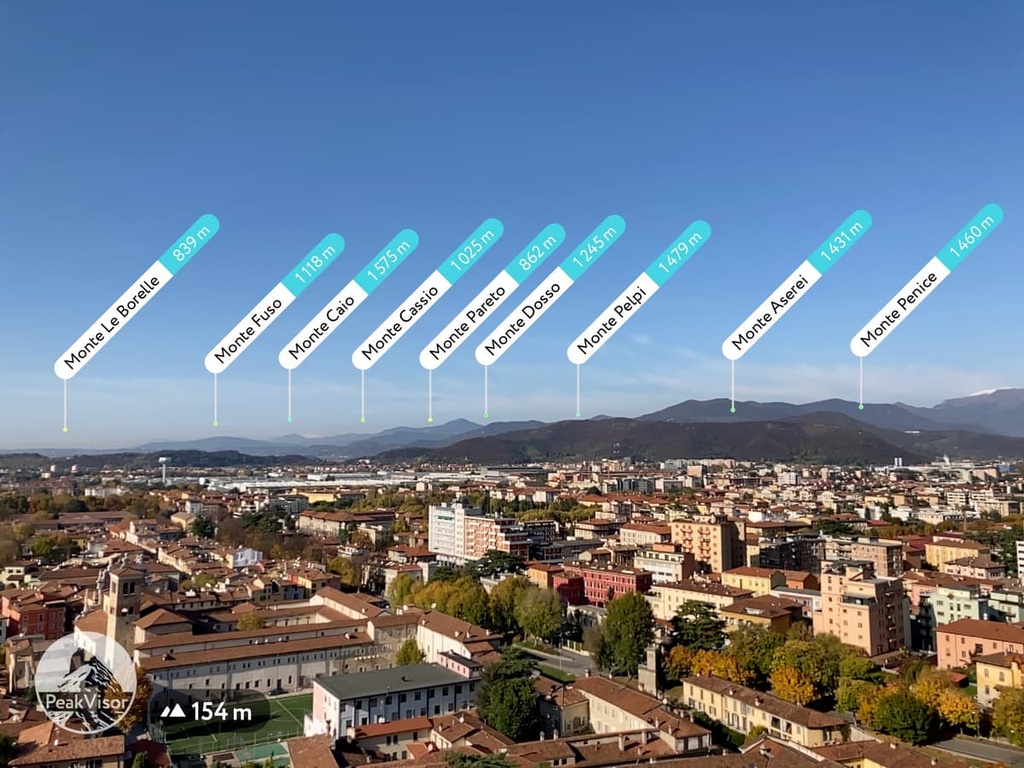
Before going to the park, stop by the one of the three official tourist offices of Brescia to pick up a paper map of the park. While there, you can ask the staff for advice on your trip to the park and the rest of the region.
Note that if you have questions before your trip, you can send an email to the tourist office at: infopoint@comune.brescia.it.
Additionally, while there is no official website of the park, there are information pages about it at the following websites: Parks.it, Comune.Brescia.it.
Infopoint Centro Brescia
Via Trieste, 1 (corner of Piazza Duomo), Brescia, Lombardy, Italy
+390302400357
Opening Hours:
Infopoint Piazza del Foro Brescia
Piazza del Foro, 6, Brescia, Lombardy, Italy
+390303749916
Opening Hours:
Infopoint Stazione Brescia
Via della Stazione, 47, Brescia, Lombardy, Italy
+390308378559
Opening Hours:
In and around Brescia you will easily find all possible types of accommodation.
However, consider staying in one of the agriturismos, which are family-owned country farms. These agriturismos serve as both hotels and restaurants, and they are very popular in Italy.
Here is a small list of agriturismos located in the park or near its borders:
Brescia is the main city of the province of Brescia. It is also the largest city in the Lombardy region after Milan.
It is an ancient city that was founded by the Romans more than 3,200 years ago. It is still one of the main centers of culture in northern Italy. Today the city is home to nearly 200,000 people.

Although Brescia may not be as famous as Milan, Verona, or Venice, this is more because the city isn’t actively promoting itself, rather than because it has fewer attractions. Brescia is very beautiful and interesting, and it is worth a visit before or after your hike.
One of the main architectural and cultural attractions of the city is the Brescia Castle (Castello di Brescia). It is a huge military fortress that was built in the sixteenth century by Venetians to defend the city. The castle served until a similar defensive point was built on Monte Maddalena (870 m / 2,854 ft).
The Castle of Brescia is also home to a small area in the Brescia Hills Park with many other hidden attractions, such as:
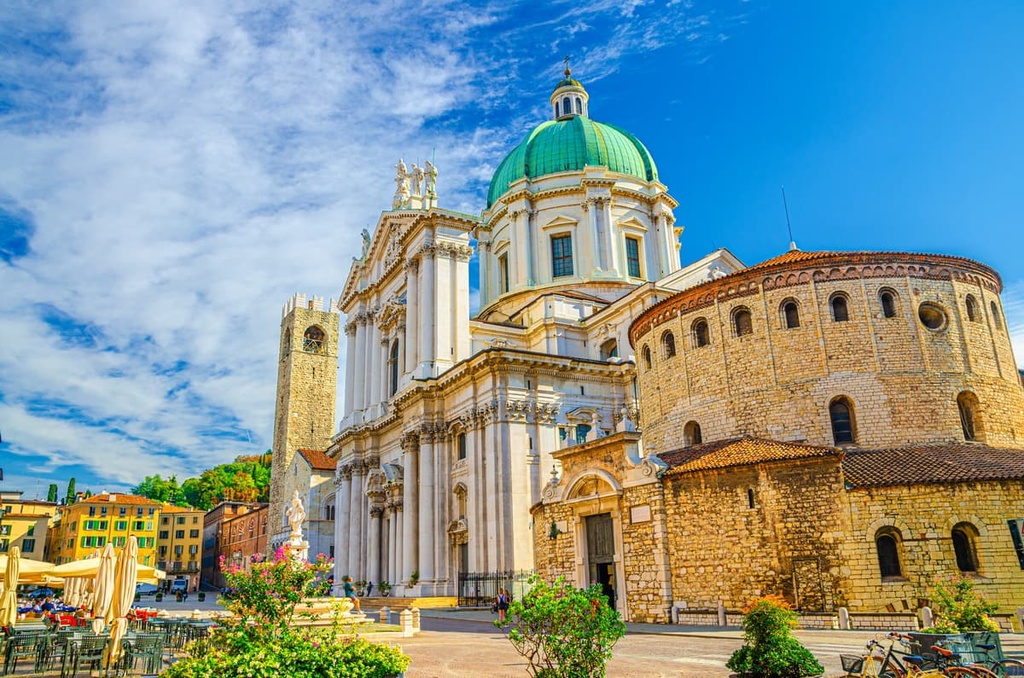
The castle also hosts numerous annual events, such as excursions in the castle’s walls and hidden tunnels, a Medieval festival, and a so-called Cinema Under the Stars, among others.
For more information, check out the official tourist site of Brescia: BresciaTourism.it
Explore Parco delle Colline di Brescia with the PeakVisor 3D Map and identify its summits.








